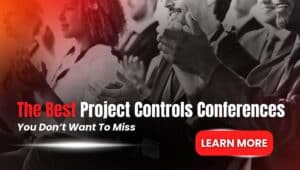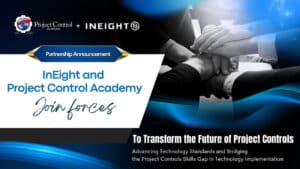As a Project Controls professional, have you ever presented your monthly progress report and it felt like you were talking to the wall? Or perhaps, you were a Project Manager in that same audience and had no idea how to interpret the metrics being presented. The scenario you experienced is just one of many that makes bridging the gap between Project Controls and Project Management so important.
Wait, aren’t Project Controls and Project Management the same thing?
Not at all. You see, Project Controls is a subset of Project Management, and both have different roles and functions in the project. You can check out our previous blog post for a detailed explanation of the differences between Project Controls and Project Management.
On one hand, we have the Project Manager, a very busy person whose main role is people management. Then we have the Project Controls team, whose role is to audit and support the project management team, depending on the project structure set-up.
Yet we often see both entities working less than ideally together. Is there a systemic reason for that? Is that trend only specific to certain industries? And how can we overcome these gaps?
We recently had Steven Ciancio onboard to answer these questions during our live broadcast session. Steven Ciancio is a senior leader in Project Controls with over 20 years of experience in the mining and oil and gas industries. He used to serve as the Project Controls Director for Chemex Global.
In addition, we also have valuable input on a similar topic coming from Chris Carson, the Enterprise Director of Program & Project Controls at Arcadis U.S. Chris delivered a Masterclass on ‘How to Build a Robust Project Controls Process to Bridge the Gap with Project Management.’
You can watch the recorded session here.
Well, let’s not wait any longer to obtain nuggets of wisdom from the industry leaders. Read on below!
What Are Some of The Reasons for Gaps Between PC and PM?
We can define gaps in this context referring to the failure of the Project Controls team and Project Management team to work together in an optimal way. Some of the common gaps we can identify are:
Not Truly Understanding Each Other’s Roles
The lack of understanding of each other’s roles is perhaps the largest obstacle to effective teamwork between Project Controls and Project Management teams.
The Construction Management Association of America (CMAA) defines Project Management as “the use of integrated systems and procedures by a team of professionals during project design and construction”. Project Management is applied across all project phases such as in Fig. 1 below.

Figure 1: Typical Project Phases
Whereas Project Controls are the analytical disciplines within Project Management.
Project Controls determine the feasibility of a project and define benchmarks against which to measure performance. Project Controls also ensure reasonable duration and costs and measure performance to compare to benchmarks. Finally, they identify variances and issues that affect the plan and then identify actions to mitigate or improve performance.
Yet many project professionals still do not fully appreciate the value that each role brings to the project. For example, a key role of the Project Control team is to audit project performance. The Project Management team may view this process as being over-critical. They fail to see any tangible takeaways from the audit in helping project performance. What follows is a lack of cooperation and Project Controls receiving less than quality data. The vicious cycle continues until project team members are no longer comfortable with one another. And that is the main hindrance to having an effective team.
Not Involving Project Controls from the Onset
Some companies still do not fully understand the function of Project Controls. As a result, Project Controls is only mobilized where and as needed. This is especially true in certain industries where Project Controls is largely relegated to an accounting role.
Perhaps this is due to the misnomer of the word ‘Control’ in ‘Project Control’. Some may think Project Controls are only involved during the Execution and Controlling phase of the project. The truth is the Project Controls team needs to be involved in all phases of the project, starting at its inception.
Some industries only bring Project Control professionals into the project team when a project is failing or has already failed. This is a double whammy; not only is it too late for Project Control professionals to help turn around the project but they also risk being labelled as ineffective.
Outsourcing the Project Controls Function
First and foremost, there is nothing inherently wrong with this practice, which is typically born of a strategic mindset. However, we may find ourselves relying on a company to control the entirety of the project. We may start to see a disconnect between the Project Management team and the external entity hired to control the project.
Over time, the level of disconnect degrades into indifference. The external project controls team may be simply seen as ‘hired hands’ by the PM. Whereas the project controls team may in turn view the PM as being uncooperative.
Steven mentions that at Chemex, they are disassociating from the old ways of relying on EPCs for project controls. Instead, they have an internal Project Controls team that provides oversight to the Project Management team.
The Chemex leadership’s support is a key driver to driving this change. From the CEO to the COO and even CCO, they understand the importance of having an internal Project Controls function. Furthermore, Project Controls is set up as an entity within Chemex instead of being a subset of Project Management.
Top 3 Challenges Faced by Project Controls in an Organization
The above are some of the reasons for the gaps that exist between Project Controls and Project Management. On top of that, the Project Control team also must contend with obstacles within their organization. Has your team faced some of the challenges below?
Propagating a Reactive Mindset
Project Quality Management tells us that the cost of rework is higher than the cost of prevention. Similarly, Project Control teams often find themselves on the receiving end due to a lack of buy-in from the organization.
For example, Steven observes how many organizations react to a failing project by hiring a more experienced project manager. What’s perplexing is that the newly hired project manager then turns around and says they need Project Controls to tell them what went wrong in the project.
Having this reactive mindset unfortunately extends into other aspects that affect the ability of Project Controls to deliver consistent work. The organization may drag its feet on providing the necessary tools to the Project Controls team. They may provide less-than-qualified personnel that hinders the Project Controls team from functioning well.
The small losses in productivity and minor cost overruns eventually accumulate and may instigate a blaming culture.
Not Investing in Project Control Professionals
Project Control professionals are just like any other project professional in an organization. They will thrive if given proper training and staff development. Yet many organizations expect Project Control Teams to be subject matter experts from the get-go.
This cannot be further from the truth. Project Control teams are just like any other entities within an organization. They are made up of members with varying levels of experience. Or some members may specialize in a Project Control knowledge area such as Planning and Scheduling but not in others such as Cost Control.
The only way to develop well-rounded Project Control professionals is through structured training, whether external or internal, combined with mentoring and on-the-job training. All this translates to additional cost and time which the organization should have the foresight to commit to.
Having a Less-Than-Ideal Project Setup
One of the worst things a Project Controls team can face is being inadvertently set up to fail. Yes, we understand that the project environment is never a perfect one. However, some decisions, no matter how innocent, can make or break the success of the Project Controls team.
For example, the organization may decide to fast-track a project without consulting the Project Controls team. The Project Controls team could have advised the Project Management team based on historical data and trend analyses.
So, it’s not a surprise the project performance is hanging by the thread by the time Project Controls is brought in, well into project execution.
The Project Controls team needs to be involved from the inception of any endeavour, well-set up, with the tools they need, and with qualified personnel.
How to Do It - Bridging the Gap Between Project Controls and Project Management
So, let’s cut straight to the chase – how can we bridge the gaps between Project Controls and Project Management?
We break it down for your below – see if you might implement this next!
Resolve the Lack of Cooperation
We discussed earlier how lack of cooperation stems from a misunderstanding of each other’s roles. The Project Management team may misunderstand the prying questions and data requests from Project Controls as a criticism of their performance. Project Controls, on the other hand, cannot perform their job well without the requisite data and buy-in from Project Management.
Yet, there is a solution to this dilemma. On one hand, we cannot and should not deny the obligation of the Project Controls team to perform its due diligence. We can, however, advise Project Controls to be tactful in their approach. After all, we are not auditing the PM team but the project performance.
Here are some strategies suggested by Chris Carson to tone down the approach and obtain the PM’s buy-in:
- If the audit is too harshly critical – Stay objective and factual
- If the project is running very badly behind – Get invested in helping to keep the project on track – this means teaming to find ways to improve performance
- If contractors are not showing up on schedule – identify non-performing contractors and provide the PM with good “proof” of the lack of performance
- If the PM doesn’t see a draft of the report before senior staff – discuss the conclusions with the PM for their insight
- If the PM feels blind-sided by the reporting – make sure the PM knows ALL the issues
Perform Proper Auditing of Project Performance
Ask any Project Control professional to list down their corporate pet peeves and you’ll probably come across inconsistent reporting.
You see, the Project Controls team thrives when their standard procedures, processes, tools, and techniques are adhered to. This is especially true for portfolio and program project controls. This is why Project Control audits the project performance, to ensure adherence to the above.
We can broadly categorize the auditing process into two categories – auditing of the project history and project plan.
In Fig. 2 below you see the data date splitting the timeline in two. In layman’s terms, the data date is the progress cut-off date up to which the schedule has been updated with. Everything to the left of the data date is historical data, whereas everything to the right of the data date is forecasted.
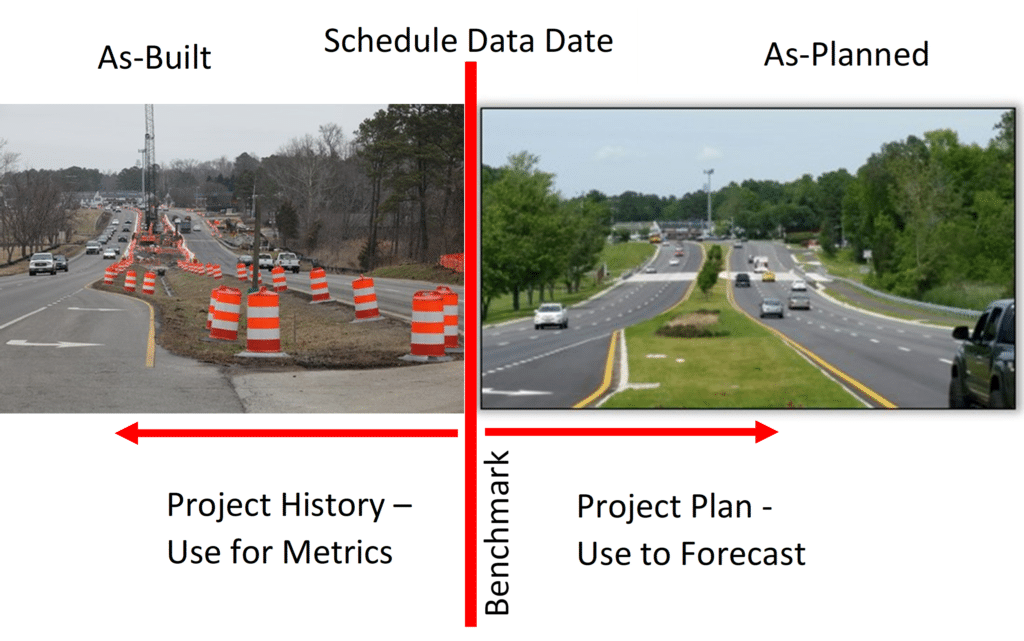
Figure 2: The Two Categories of Project Performance Auditing
You might be tempted to think that only the forecast or project plan requires auditing. After all, the past cannot be changed, right? Well, that’s where the expertise of Project Controls comes into play.
But first, let’s talk about auditing the forecast project plan. Make sure the schedule development is a joint effort with the superintendent and Project Manager. Spend the necessary time to ensure the Project Management is happy with the schedule and understands the logic. Ensure the Construction Management team is involved with the schedule updates. Monitor the Critical Path delay, Near-Critical Path delay, and Trend Analysis.
But that’s not enough on its own. Project Controls also needs to perform Forensic Analysis – analysing what happened over the past month or reporting period.
They may ask questions such as, “Did the CM team achieve their lookahead targets?”. Yes, they will find out why a project is underperforming just as they will document why a particular project is performing well.
And Project Controls are trained to do just that – to have thick skin and ask hard-hitting questions yet in a constructive manner. And that brings us to the next point, having effective communication skills.
Have Effective Communication
Communication is routinely voted as the number one important skill for working professionals. And it’s even more so important for project professionals. Remember that Project Management is a busy role and attempting to force them to engage with schedule analysis may cause conflict.
Project Controls can approach this by being adept at rolling up information into a succinct report. Follow a dashboard approach to provide reports and useful insights. Chris gives us some useful tips on how to build effective reports for Project Management teams in Fig. 3 below.
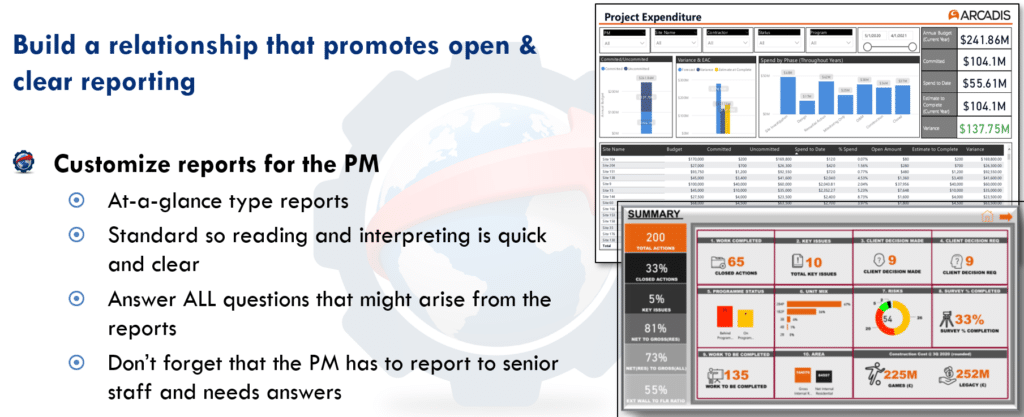
Figure 3: Guidelines to Develop PM-Friendly Reports
Steven’s advice to the Project Controls team is to communicate why certain procedures and processes exist. Explain to the Project Management team why they need to provide project data at regular intervals. We cannot just put out a standard and expect the project team to comply blindly.
Advice To PC Leaders Aiming at Bridging the Gap Between Project Controls and Project Management
Some of you may already be a Project Control lead in your organization or aspiring to start up the Project Controls function. If you’re struggling to build a robust project control culture, don’t give up!
Here’s some additional advice that will help you along the journey of bridging the gap between project controls and project management.
Provide Value in Any Situation
Let’s face it. Having a Project Controls entity seems to be the exception for most organizations, regardless of the industry. To make matters worse, some organizations do not even assign Project Controls professionals to support their Project Management team. Some companies may cite budget restrictions, again, this is a symptom of the organization not understanding the value of Project Controls.
Hence, the guiding principle for you should be this: strive to provide value in any situation.
Does your organization have trouble providing sufficient resources? Then implement only the minimum best practices that you need to gain visibility of the project to control it.
Does the size and scale of your project make the use of sophisticated scheduling tools cost-prohibitive? Then find an off-the-shelf scheduling tool anyway, one that allows you to apply scheduling techniques.
Have you recently joined an organization with zero historical project control records? Then start collecting historical records and measuring metrics from this project onwards to provide value.
Let all your initiatives intersect into a well-designed dashboard that transforms the data into insights for your Project Management team and Executives. Anticipate the Project Manager’s needs and address them, such as generating a customized report for concrete pour dates.
Then, before you know it, you have set the stage to make the Project Controls function visible to your organization. Wouldn’t you be in a much better position now to promote the value of Project Controls?
Develop a Project Controls Roadmap
The Project Controls entity in an organization should not be a one-trick pony. The entity needs to show real intent in sustaining itself, continuously developing its people, and continually providing value to the organization.
We can formalize this intent by developing a Project Controls Roadmap. Develop a well-thought-out roadmap by performing a training needs analysis at the organizational, departmental, and individual levels. All three levels are interlinked and should ultimately aim to achieve business objectives.
First and foremost, surround your Project Controls team with knowledgeable, good people that willingly share their expertise. Remember that the technical skills of your team are just as important as their soft skills. The ability to communicate effectively and be mentored provides greater human resource dividends to the organization.
Only after this stage do we focus on the tools, techniques, procedures, and processes. As Steven states, we are only as successful as the most struggling person on the team.
Final Thoughts
Those that are initiating their journey in the Project Controls field, have thick skin. Don’t be afraid of stating the truth if that is what it takes to improve project performance. There is only so much framing and tact we can apply to soften the delivery of bad performance. But do understand why a project is underperforming. Have the answers and analytics ready when you walk into a forecast and performance meeting. Perform your due diligence and have the answers. If you do not have the answers, ask questions of people who have the answers. This is the only way you will truly improve yourself in Project Controls.
Conclusion
So, do you feel confident about bridging the gap between project controls and project management in your organization? Remember, these are tried and true methods from industry experts, and there is no reason why they wouldn’t work for you too!
If you would like further understand the important role that Project Controls play in an organization or even within a project, join us in our Applied Project Controls training. You will learn in-depth how to apply the major analytical disciplines of project management, just as we discussed in this blog post.
Furthermore, check Project Control Academy’s best-in-class and highly practical online training programs in Project Controls and take your knowledge and skills ( or your team’s) to the next level.
References
- Ghorbani, Shohreh. “What Is The Difference Between Project Controls & Project Management?“. Project Control Academy, 13 Feb 2017.
- Ciancio, Steven. “[Livestream] How to Build Robust Project Controls That the Project Management Team Admires”. Project Control Academy, 1 Sep 2022.
- Mutang Tagal, Bian. “Top 4 Professional Development Gaps Limiting Your Project Professional Career In The New Era“. Project Control Academy, 3 Jan 2022.
- Mutang Tagal, Bian. “How Can A Project Manager Perform An Effective Project Schedule Review?”. Project Control Academy, 21 Feb 2022.
- Joel, Jacob. “An Introduction To Visual Data Analytics With Power BI“. Project Control Academy, 24 Jul 2021.
- Carson, Chris. “How To Build a Robust Project Controls Process To Bridge the Gap with Project Management”. Project Control Academy, 28 Sep 2022.
About the Author, Bian Mutang Tagal:
 Bian Mutang Tagal enjoys the opportunity to write about important trends in the Project Controls industry while also providing useful tips to fellow Project Controls practitioners.
Bian Mutang Tagal enjoys the opportunity to write about important trends in the Project Controls industry while also providing useful tips to fellow Project Controls practitioners.
Bian comes from a conventional Planning & Scheduling background and is also a trainer with technical capabilities in 4D BIM Planning and Advanced Drone Photogrammetry. He has consulted for several key infrastructure projects such as the Pan Borneo Highway project in Sarawak and has worked in the oil & gas industry developing maintenance schedules for a major oil and gas operator.
He holds a Bachelor of Science (BSc.) in Petroleum Engineering from The University of Texas at Austin. Bian was an invited speaker at the Project Control Summit 2022 and The Institution of Engineering and Technology (IET) Evening Talk 2020.
About the Project Controls SME, Steven Ciancio
 Steven Ciancio has over 20 years of international experience working on capital projects in the mining and oil and gas industries, having held various leadership roles in project controls at organizations such as: INEOS, Oxy and Chemex Global. He is highly skilled in Earned Value Management, planning, and scheduling.
Steven Ciancio has over 20 years of international experience working on capital projects in the mining and oil and gas industries, having held various leadership roles in project controls at organizations such as: INEOS, Oxy and Chemex Global. He is highly skilled in Earned Value Management, planning, and scheduling.
Steven grew up in Glen Cove, New York, and later received his Bachelor of Science in Electrical Engineering.

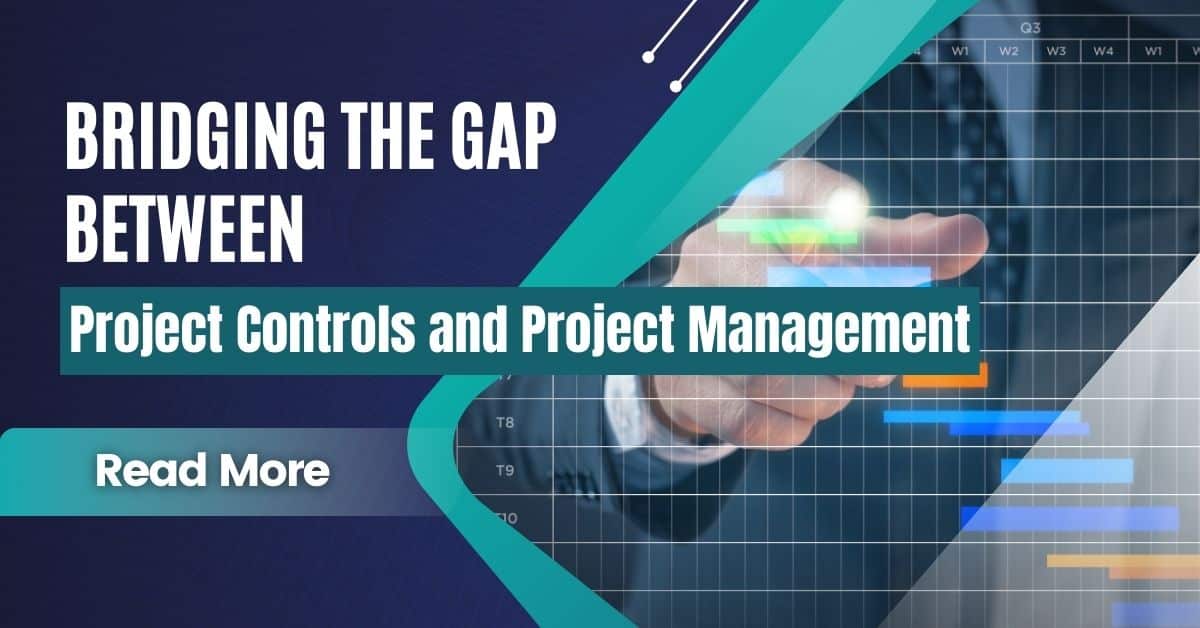
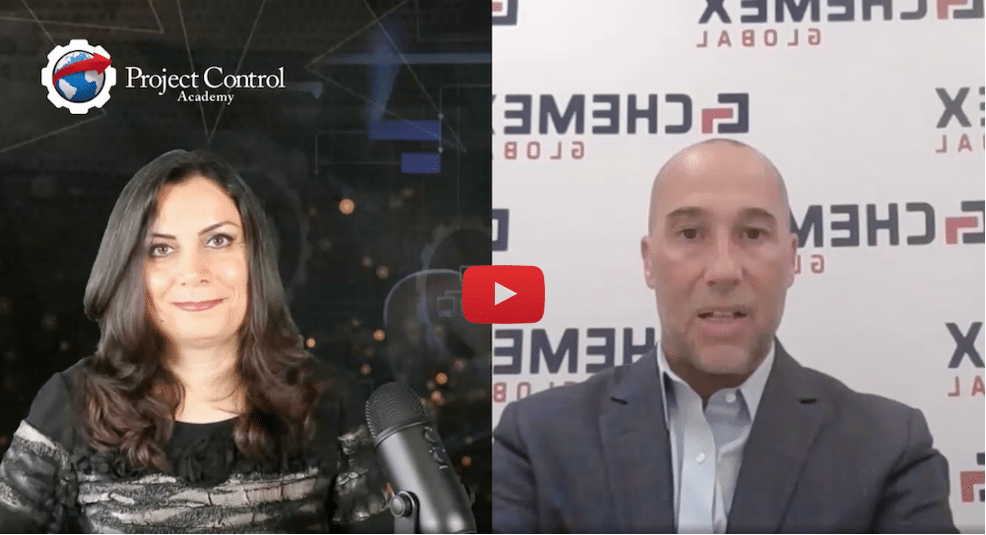




![[Free 90-min Masterclass] The Ultimate Leadership Recipe for Project Professionals](https://www.projectcontrolacademy.com/wp-content/uploads/2024/08/4-1024x576.jpg)








